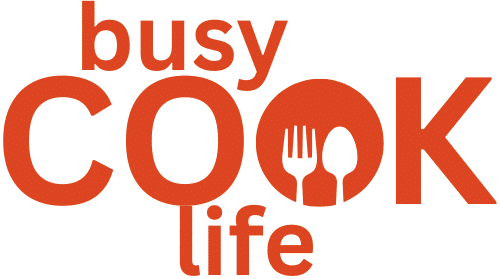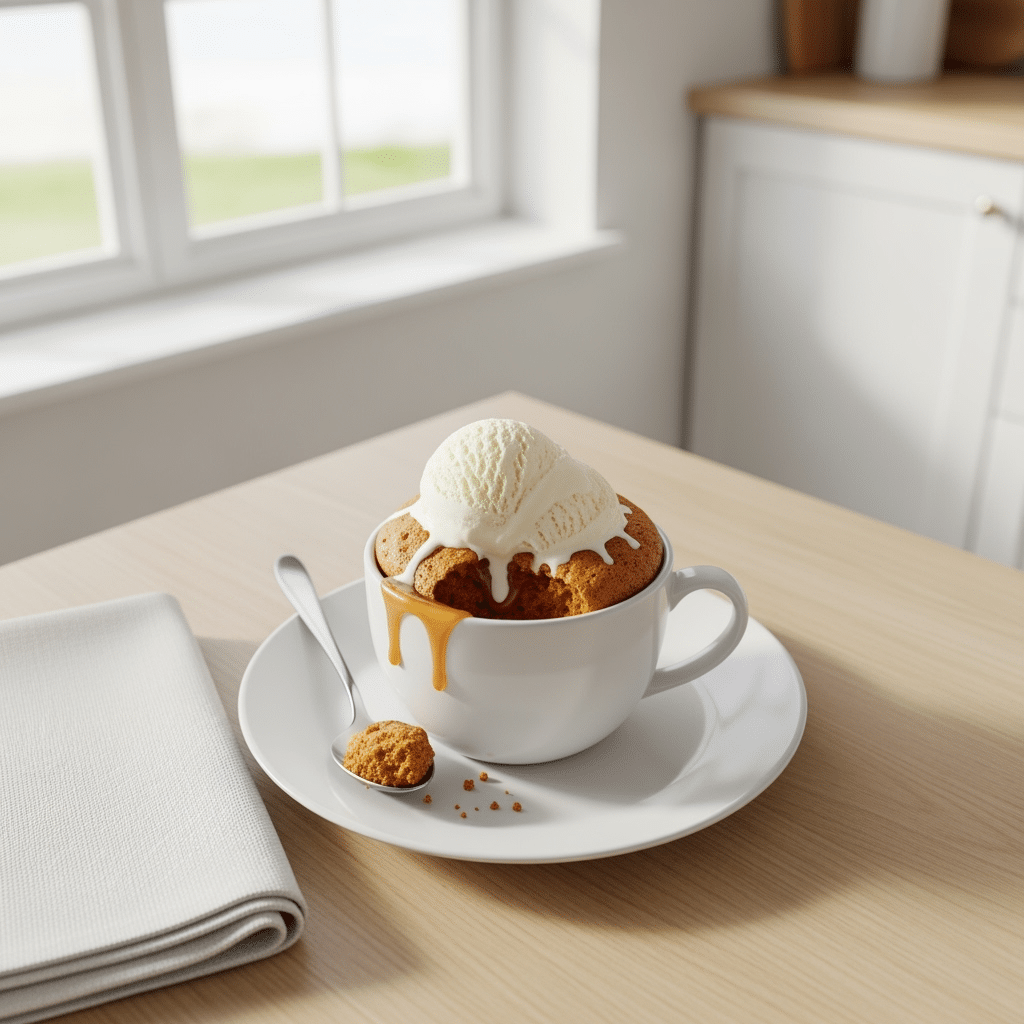If you’ve ever craved something warm, sweet, and deeply nostalgic without wanting to deal with ovens or a sink full of bowls, this butterscotch mug cake is for you. It all started for me one night after putting my toddler to bed, with the dog pacing by the door and a half-finished episode playing on the TV. The kitchen was quiet except for the hum of the microwave, and I was stirring together brown sugar, vanilla, and just a touch of salt right into my favorite mug. Thirty seconds later, I had something close to magic: a golden, gooey butterscotch mug cake that tasted like my grandma’s pudding and a bake sale treat rolled into one.
Here’s the thing—desserts don’t need to be elaborate. I’ve found that with a little brown sugar, melted butter, and microwave timing just right, you can create flavor that hits that sweet spot between cozy and indulgent. And trust me, once you try this butterscotch mug cake, you’ll realize it’s right up there with reader favorites like my sugar-free mug cake or the chocolate orange mug cake.
In this article, we’ll walk through everything from how to get that perfect gooey texture without ending up with a rubbery mess, to what makes this butterscotch mug cake so uniquely satisfying compared to something like a caramel-flavored mug cake. You’ll also find answers to some common microwave dessert questions, from what a true 3-ingredient mug cake looks like to why your last mug cake might have turned out too chewy.
Whether you’re looking for a quick dessert to pair with tea, or you just need that sweet fix on a Tuesday night (with minimal cleanup), this recipe delivers. It’s fast, reliable, and deeply comforting—kind of like your favorite playlist or the apple pie oatmeal in a mug that so many of you now make on busy mornings.
Ready for some butterscotch mug cake microwave magic? Let’s dig in.
Table of Contents
Late Night Cravings and the Butterscotch Breakthrough
One chilly night, long after bedtime routines and toy cleanups, I found myself staring into the pantry with that unmistakable craving for something sweet. No energy for baking. No patience for cooling racks. Just the microwave and me. I had butter, brown sugar, and vanilla—three humble ingredients that whispered, “Let’s make something amazing.” And that’s how my first butterscotch mug cake was born.
The first spoonful reminded me of my grandmother’s butterscotch pudding—deeply caramelized, buttery-sweet, and totally soothing. But unlike hers, mine took less than two minutes and didn’t need a stovetop. That single mug changed everything. It was warm, gooey, and golden. Since then, I’ve made countless microwave cakes, like this cozy apple pie mug cake and my readers’ favorite chocolate orange mug cake, but this one holds a special place.
The Flavor Profile That Sets It Apart
So, what makes a butterscotch mug cake different from the usual mug desserts? It’s all about the brown sugar and butter combo. Unlike the smoother sweetness of a doughnut mug cake, butterscotch brings this rich, toffee-like edge that feels more grown-up but still comforting. It’s not overly sugary—just warmly sweet with a hint of molasses. Add a splash of vanilla and a tiny pinch of salt, and the flavor hits like a hug in dessert form.
This cake also has the perfect texture—soft, moist, and slightly sticky in the center. No dry, spongy microwave disasters here. If you’ve had one of those rubbery mug cake mishaps (we’ll talk about how to avoid them later), you’ll love how this version stays tender. I tested it over and over, adjusting until it matched the ideal spoon-into-cloud feel—just like the fluffiness you get in my banana pancakes mug recipe.
Fast Dessert, Big Comfort
What I love most about this butterscotch mug cake is how it fits into real life. Whether I’m wrapping up a long day with a toddler meltdown or taking five between editing blog photos, it never fails to deliver. The entire thing comes together in under five minutes. No bowls. No mixers. Just stir, microwave, and exhale.
I’ve had readers tell me they keep brown sugar and butter on hand now just for this recipe. That’s how powerful it is. One even said it replaced their late-night ice cream runs, which I’ll take as a compliment. If you’re trying to cut back on store-bought sweets but still want that indulgent bite, this cake gives you control and comfort—two things I know we all crave these days.
Even better? You can play with it. Add a few chocolate chips. Toss in pecans. Swirl a spoon of peanut butter. It’s endlessly adaptable, just like my plant-based mug dinners. The foundation is simple, the flavor is rich, and the reward is instant.
So if you’ve been hunting for a fast, deeply flavorful, and microwave-friendly treat, the butterscotch mug cake is your answer. And lucky for you, we’re just getting started. Let’s dive into the ingredients and learn how to make it perfectly every time.
Simple Ingredients, Maximum Comfort
You don’t need a stocked pantry to make a delicious butterscotch mug cake. This recipe uses everyday ingredients—nothing fancy, nothing hard to find. Most of them are probably already in your kitchen. Just like my sugar-free mug cake, this one keeps it simple and still delivers a warm, indulgent result that feels like a treat.
Here’s what you’ll need for your butterscotch mug cake:
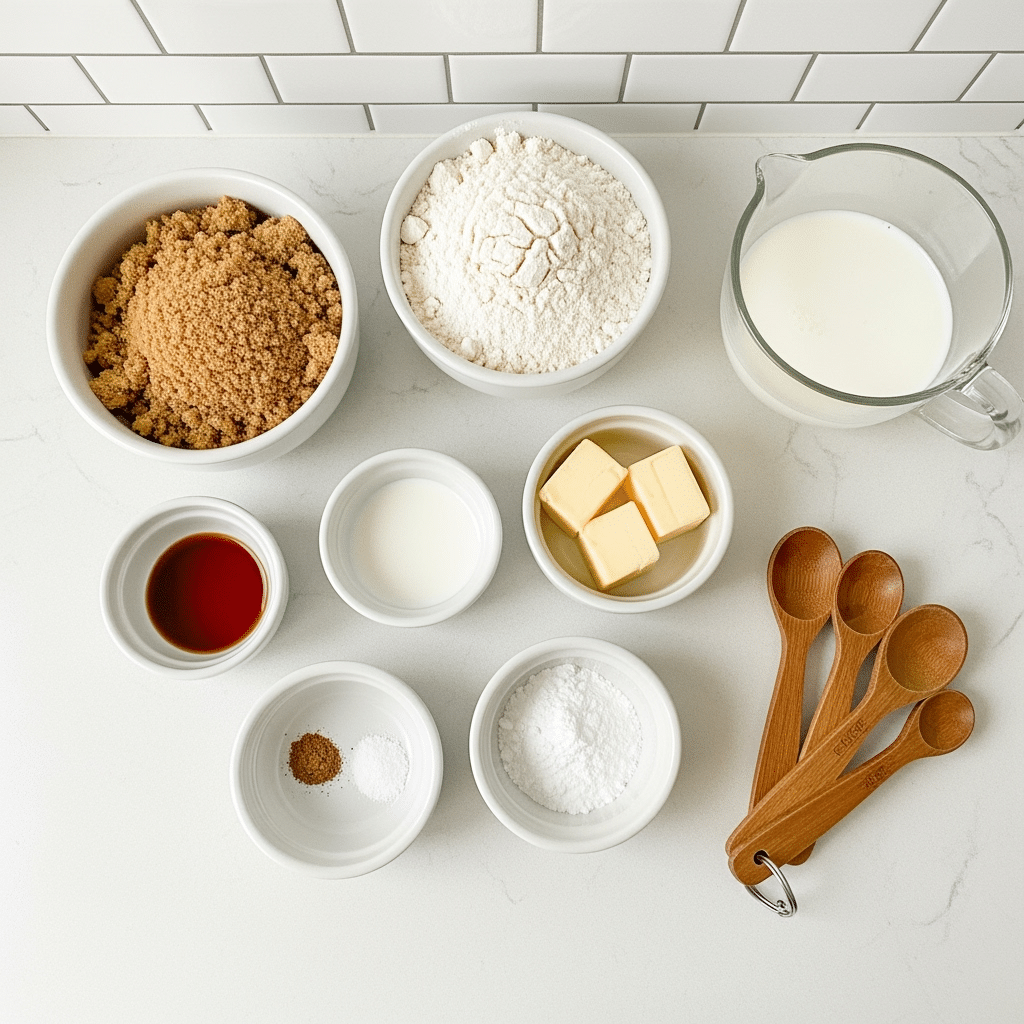
- 1 tablespoon unsalted butter – creates the rich, caramelized base that defines a classic butterscotch mug cake
- 2 tablespoons brown sugar – this is where the deep butterscotch flavor begins
- 1/4 teaspoon vanilla extract – adds warmth and aroma
- 2 tablespoons milk – makes the cake moist and tender
- 3 tablespoons all-purpose flour – the essential structure for your mug cake
- 1/8 teaspoon baking powder – gives the cake lift
- Pinch of salt – balances sweetness and enhances flavor
That’s all it takes to create your very own butterscotch mug cake. For a little twist, I sometimes toss in chocolate chips or pecans. It’s a quick trick I also use in my cookie dough mug cake when I want something extra indulgent.
Step-by-Step: Microwave Butterscotch Mug Cake That Works Every Time
When making a butterscotch mug cake, your microwave isn’t just a shortcut—it’s a secret weapon. But like any tool, it helps to understand how to use it properly. Let’s walk through the process with care so your mug cake turns out fluffy and golden every time.
Step 1: Build That Butterscotch Base
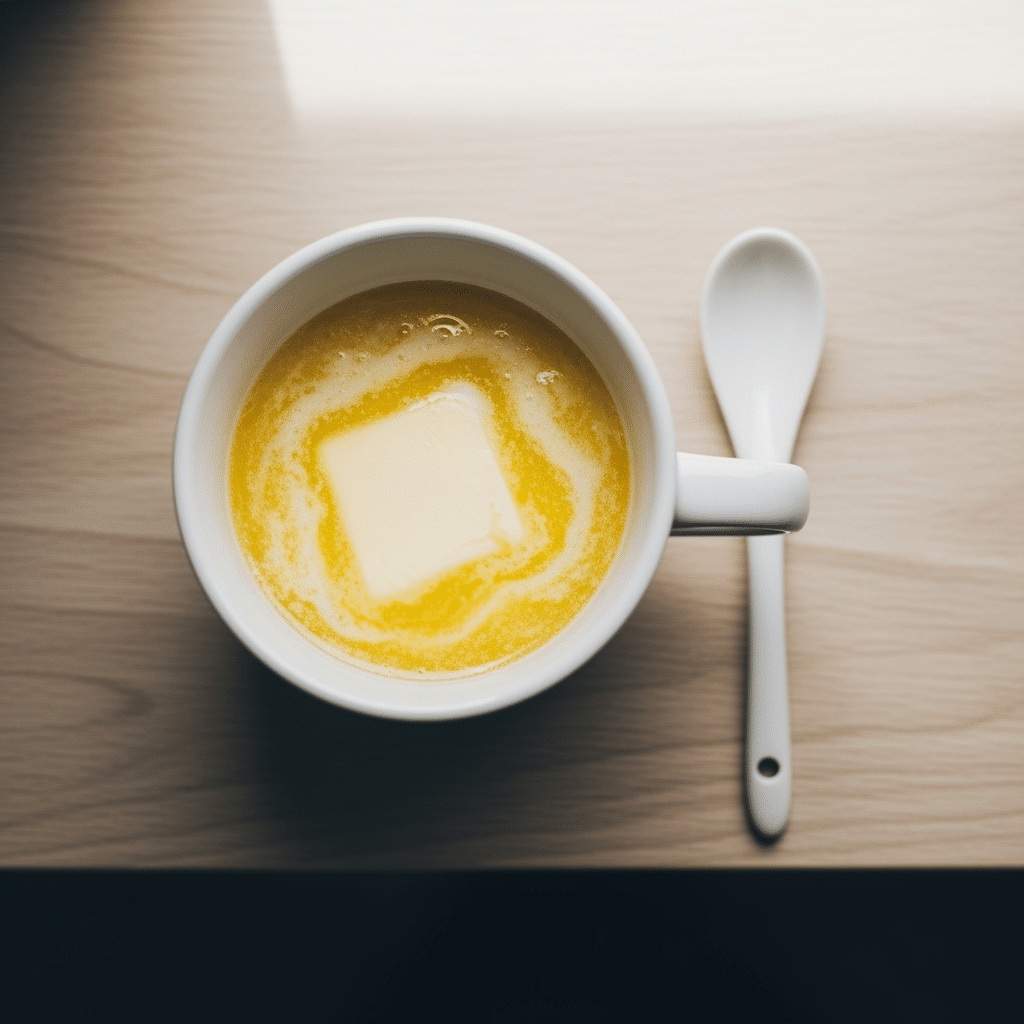
First, place your butter in a standard-size mug and microwave for 20 to 25 seconds until fully melted. Then stir in the brown sugar and vanilla extract. This step forms the core flavor of your butterscotch mug cake, and the aroma will be absolutely irresistible. It’s that same warm smell that fills the kitchen when I bake my apple pie oatmeal mug.
Step 2: Stir in the Remaining Ingredients
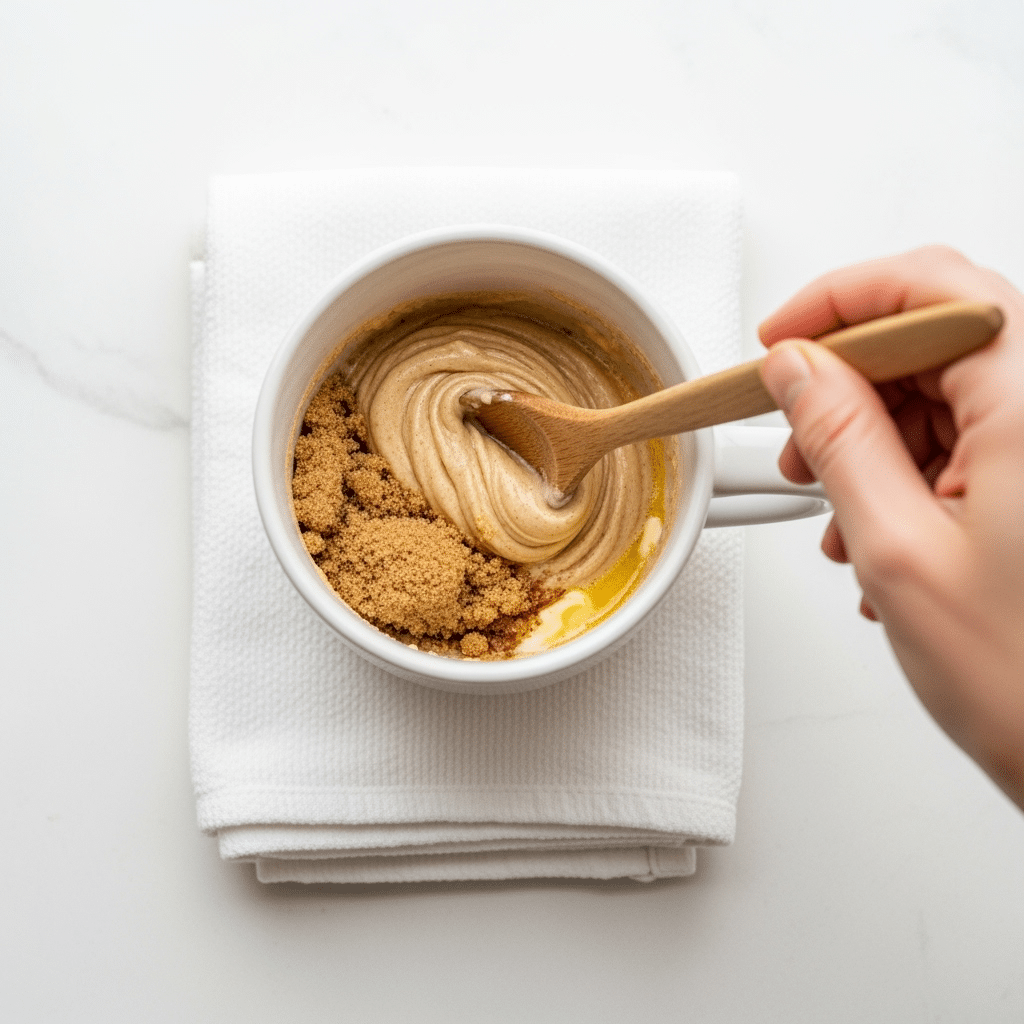
Next, add the milk and stir again. Then gently mix in the flour, baking powder, and salt. The batter should be thick and smooth. If it looks too dry, a splash more milk helps. The key is not to over-stir—overmixing creates a dense texture, which we want to avoid for a tender butterscotch mug cake.
Step 3: Microwave Like a Pro
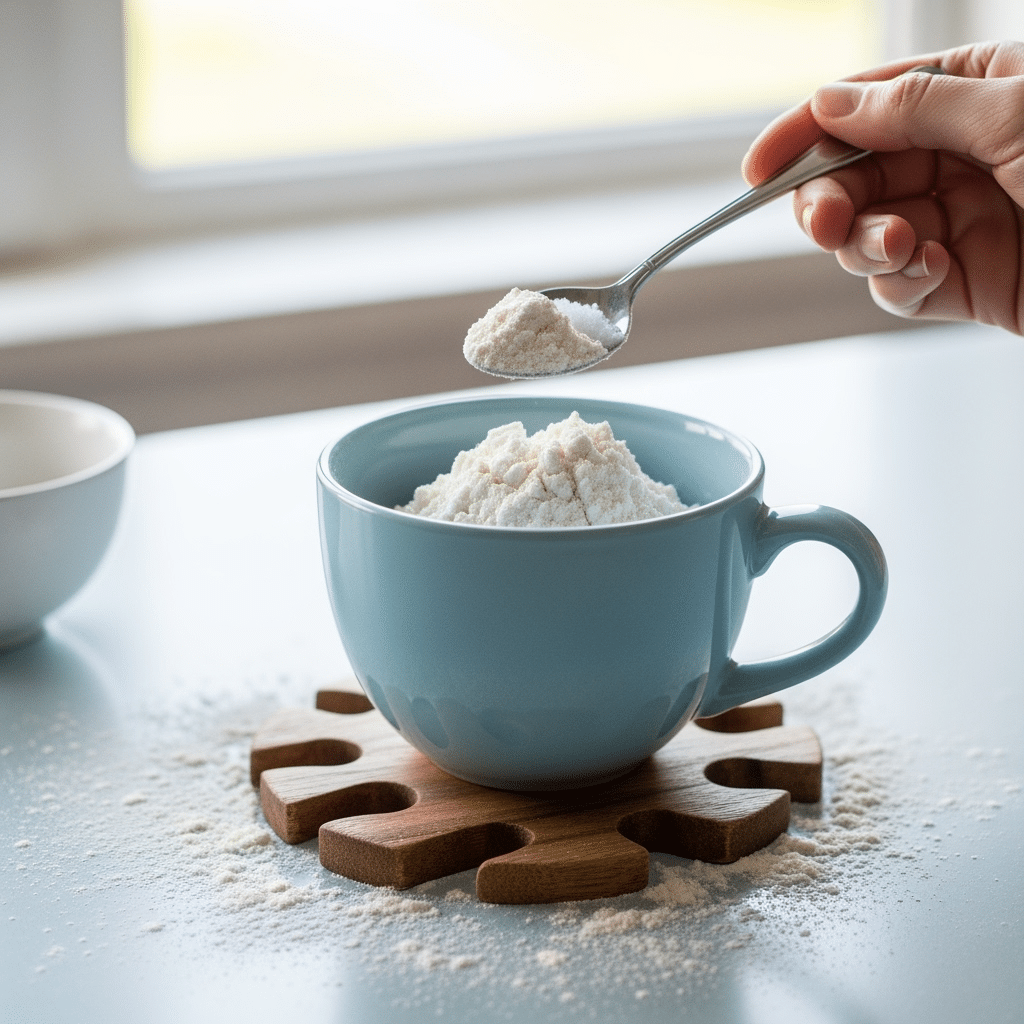
Place your mug on the outer edge of the microwave turntable (this allows for better heat distribution). Microwave on high for 45 to 55 seconds. You’re aiming for a cake that’s risen with a slightly shiny top. It should feel firm at the edges and slightly soft in the center. That gentle underbaked center? It’s what makes the butterscotch mug cake extra gooey and satisfying. That same technique works wonders in my raspberry white chocolate mug cake.

Step 4: Rest and Reward
Let the mug cake cool for one to two minutes before diving in. It finishes cooking slightly as it rests, giving you that golden-soft consistency that makes this butterscotch mug cake so special. Top with whipped cream, a scoop of vanilla ice cream, or a drizzle of caramel if you’re in the mood for a treat that feels café-worthy.
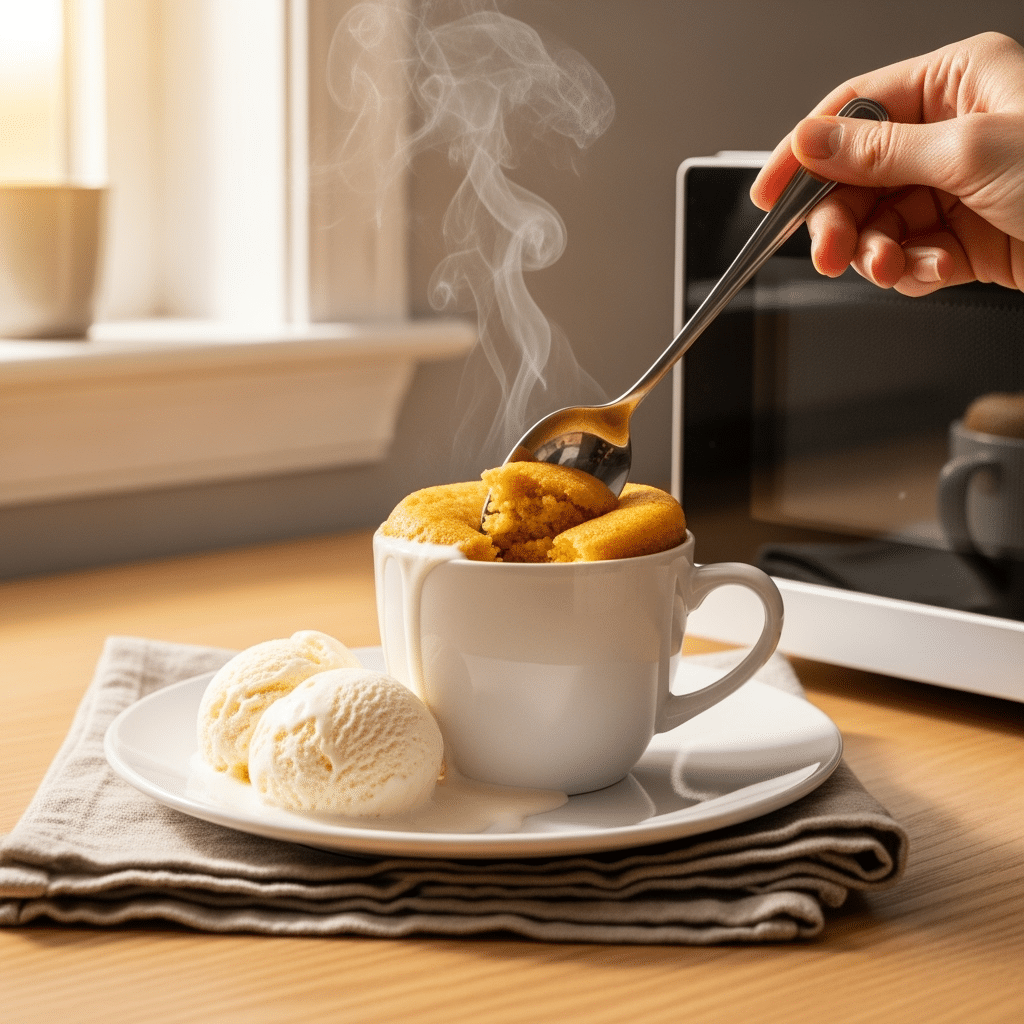
Want to Make It Your Own?
The beauty of a butterscotch mug cake is how easily it adapts. You can add in chocolate chunks, swirl in a teaspoon of peanut butter, or sprinkle flaky sea salt on top for a sweet-salty twist. Just like my flexible plant-based mug dinners, this cake plays well with whatever you have on hand.
One Mug, So Many Moments
I’ve heard from so many of you that this butterscotch mug cake has become a nightly ritual. Whether it’s a solo reward at the end of a hectic workday or a quick dessert you make with the kids, it fits into your life effortlessly. I often share more quick mug recipes and family favorites over on Everyday Eats with Emma on Facebook—come say hi! If you loved the quick comfort of the banana pancakes mug, this cake will feel just as homey and easy.
Best of all, it doesn’t require any special tools—just your favorite mug, a spoon, and a microwave. That’s what makes this butterscotch mug cake a Busy Cook Life staple. It’s fast, flexible, and full of flavor. Exactly what you deserve at the end of a long day.
Why Does My Mug Cake Turn Out Rubbery?
If you’ve ever bitten into a mug cake that felt more like a sponge ball than dessert, you’re not alone. One of the most common questions I get is: “Why is my mug cake so rubbery?” The truth is, microwave baking is a little different than traditional baking—and it doesn’t forgive the same mistakes. But don’t worry—getting that perfect soft texture in your butterscotch mug cake is totally doable with a few simple tips.
Just like when making my snickerdoodle mug cake or apple pie mug cake, the biggest factors in texture are how long you microwave, how you mix the batter, and the ratio of wet to dry ingredients. Let’s break it down.
1. You’re Microwaving Too Long
This is the number one culprit behind rubbery cakes. Microwaves heat quickly and unevenly. Even 10 seconds too long can dry out your butterscotch mug cake. For most microwaves, 45 to 55 seconds is the sweet spot. You want the edges cooked and the center just barely set. It should still look slightly shiny on top—don’t worry, it will firm up as it cools.
In my raspberry white chocolate mug cake, I always stop the microwave at 50 seconds to keep the middle gooey. The same rule applies here: under is better than over.
2. You’re Overmixing the Batter
Stir just enough to combine. Once you’ve added your dry ingredients to the wet, mix until no streaks of flour remain, then stop. Overmixing develops gluten, and gluten creates chewiness—not what we want in a soft butterscotch mug cake. If you’re going for fluffy, keep the stirring gentle and brief.
3. Your Mug Is the Wrong Size or Shape
Surprisingly, the mug itself can make a big difference. A tall, narrow mug may cause uneven heating—leading to overcooked edges and raw centers. Use a standard 10 to 12 oz mug with a wide base. It helps the butterscotch mug cake cook evenly. I use the same kind I use for my doughnut mug cake, and it works like a charm every time.
4. You Need More Moisture
If your cake feels rubbery and dry, your batter might need a bit more liquid. Don’t be afraid to adjust. Add an extra teaspoon of milk if the batter seems thick or dry. Microwave mug cakes should start with a thick but pourable batter—like pancake mix. Too dry before heating = dry after.
5. You’re Using the Wrong Flour
Stick with all-purpose flour. Almond flour, coconut flour, or self-rising alternatives change how the cake rises and retains moisture. If you do want to experiment, follow a recipe specifically developed for that flour like my plant-based mug recipes.
Perfecting Texture in Every Butterscotch Mug Cake
Once you get the hang of microwave timing and batter balance, your butterscotch mug cake will come out soft, moist, and just the right amount of gooey every single time. A well-made mug cake should break apart with a spoon easily, steam slightly, and taste like something you’d happily serve a guest (if you’re willing to share!).
And hey—if one batch doesn’t come out just right, don’t sweat it. The beauty of this recipe is how fast you can try again. No wasted eggs or ruined pans. Just a minute of mixing, less than a minute of cooking, and you’re back to enjoying sweet success.
Want to keep the comfort coming? Try pairing your mug cake with warm drinks like a cinnamon chai or caramel latte. Or go all in and top your next butterscotch mug cake with a scoop of ice cream and crushed graham crackers. That combo is always a hit in my house.
What Makes Butterscotch So Special?
There’s a reason I keep coming back to this butterscotch mug cake—it’s not just the speed or the ease. It’s the flavor. Butterscotch has this way of wrapping you up in comfort with every bite. That deep caramel vibe doesn’t come from fancy techniques or expensive ingredients—it’s just brown sugar and butter doing what they do best. When microwaved together, they create a warm, almost pudding-like richness that feels like dessert straight from a bake sale stand or grandma’s kitchen.
Compared to desserts that use white sugar, butterscotch feels a bit more mellow, rounder in flavor. It doesn’t shout, it soothes. That’s why I love making it in the microwave. It transforms into something golden and gooey with minimal effort. You’ll find the same cozy vibes in my apple pie oatmeal mug, where the brown sugar and cinnamon create a similar warmth in every spoonful.
Simple Ingredient Swaps That Work
If you’re out of brown sugar, don’t panic. You can quickly make your own by mixing 1 cup of white sugar with 1 tablespoon of molasses. It’s a great backup when you’re craving a butterscotch mug cake but the pantry’s looking a little bare. I’ve used that trick more than once on nights when grocery trips weren’t happening.
Want to switch things up? Try adding a swirl of peanut butter, a handful of mini chocolate chips, or a sprinkle of sea salt on top before microwaving. It’s amazing how one little addition can change the entire personality of your mug cake. That same flexibility is what makes my plant-based mug dinners so popular—simple base, endless upgrades.
Minimal Ingredients, Maximum Comfort
One of the things I love most about mug cakes is how little you actually need. With just butter, brown sugar, milk, flour, and a pinch of salt, you’ve already got a dessert that tastes like it took way more effort. If you’re short on time or ingredients, a quick version of the butterscotch mug cake can come together with as little as three ingredients—melted butter, brown sugar, and self-rising flour. It’s not quite the full version, but it still gives you that sweet, soft cake feel in a hurry.
I sometimes keep a little “mug cake stash” in the pantry—pre-measured dry mix in a jar, ready to go. Add butter and milk, stir, microwave, and boom—instant reward. If you’re like me and get snack cravings right after bedtime routines or mid-Netflix binge, having that option ready makes all the difference.
Flavor Twists to Try Next
Once you’ve mastered the basic butterscotch mug cake, there’s no reason to stop there. Try mixing brown and white sugar for a lighter flavor. Or add a spoonful of caramel sauce before cooking for a deeper, syrupy bite. I’ve even tried it with a splash of maple syrup instead of vanilla—it added a beautiful twist I didn’t see coming.
This is what I love most about mug cooking. There are no rules. No big mess. No pressure. Just one mug, one microwave, and a few minutes between you and something warm and wonderful. Whether you go full butterscotch or get creative with flavors, the result is always satisfying.
Looking for other microwave favorites with that same quick comfort payoff? You might enjoy the snickerdoodle mug cake or the gooey perfection of my cookie dough mug cake. I’ve also pinned all of these reader faves on Busy Cook Life’s Pinterest so you can save and try them anytime. They’re proof that the best desserts don’t require ovens, timers, or cleanup—just a little craving and a trusty microwave.
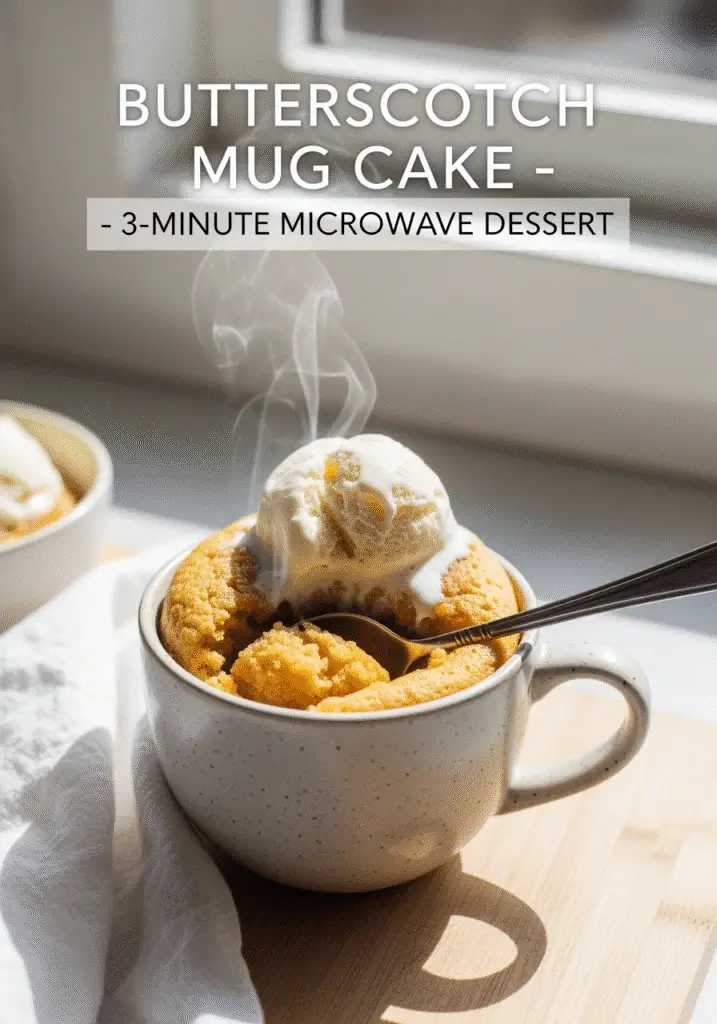
Frequently Asked Questions
What’s the difference between caramel cake and butterscotch cake?
Caramel is made with white sugar cooked until golden and slightly bitter, while butterscotch uses brown sugar and butter for a sweeter, warmer flavor. That’s why a butterscotch mug cake feels cozier and less intense.
Why is my mug cake so rubbery?
Overcooking is the main reason mug cakes become rubbery. Microwave for only 45–55 seconds, mix gently, and avoid over-stirring. These steps help keep your butterscotch mug cake soft and moist.
What is a 3 ingredient mug cake?
A basic version includes melted butter, brown sugar, and self-rising flour. It won’t be as rich as a full recipe, but it still gives you a quick and satisfying butterscotch mug cake in under a minute.
How to make a caramel mug cake?
Swap brown sugar for white, add a bit more vanilla and a touch of salt. For bolder flavor, microwave white sugar with a little water to caramelize before adding. It’s a deeper take on the classic butterscotch mug cake.
Conclusion
Sometimes the best desserts aren’t the ones with the most ingredients—they’re the ones that make you pause, breathe, and smile. This butterscotch mug cake is exactly that kind of recipe. It’s warm, gooey, rich in flavor, and made to fit into real life. Whether you’re winding down after a long day or sneaking in a quiet snack break, this cake delivers comfort in under five minutes.
I created this recipe for moments when energy is low, but the craving is real—just like I did with my banana pancakes mug and the sugar-free mug cake. No special tools, no extra mess, just a mug, a microwave, and a few kitchen basics. That’s the magic of Busy Cook Life.
So grab your favorite mug, queue up your favorite song, and make something sweet, simple, and satisfying. Trust me—this butterscotch mug cake won’t disappoint.
Print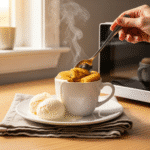
Butterscotch Mug Cake – Quick, Gooey, and Microwave-Ready
- Prep Time: 2 minutes
- Cook Time: 1 minute
- Total Time: 3 minutes
- Yield: 1 mug cake 1x
- Category: Dessert
- Method: Microwave
- Cuisine: American
- Diet: Vegetarian
Description
This gooey butterscotch mug cake is sweet, rich, and ready in under 5 minutes. A quick microwave dessert made with pantry staples like brown sugar and butter—perfect for weeknight cravings or late-night treats.
Ingredients
1 tablespoon unsalted butter
2 tablespoons brown sugar
1/4 teaspoon vanilla extract
2 tablespoons milk
3 tablespoons all-purpose flour
1/8 teaspoon baking powder
Pinch of salt
Optional: chocolate chips, chopped pecans, or a caramel drizzle
Instructions
1. In a standard-size microwave-safe mug, melt the butter (about 20–25 seconds).
2. Stir in the brown sugar and vanilla until smooth.
3. Add the milk and mix well.
4. Add flour, baking powder, and salt. Stir gently until fully combined, but don’t overmix.
5. Microwave on high for 45–55 seconds. The center should look set but slightly glossy.
6. Let cool for 1–2 minutes before eating. Add toppings if desired.
Notes
Use a wide, microwave-safe mug (10–12 oz) for even cooking.
Don’t overcook—the cake continues to firm up after microwaving.
Customize with your favorite mix-ins like chocolate chips or a peanut butter swirl.
If you only have white sugar, mix it with a bit of molasses to mimic brown sugar.
Nutrition
- Serving Size: 1 mug cake
- Calories: 320
- Sugar: 23g
- Sodium: 120mg
- Fat: 15g
- Saturated Fat: 9g
- Unsaturated Fat: 5g
- Trans Fat: 0g
- Carbohydrates: 41g
- Fiber: 1g
- Protein: 4g
- Cholesterol: 35mg
